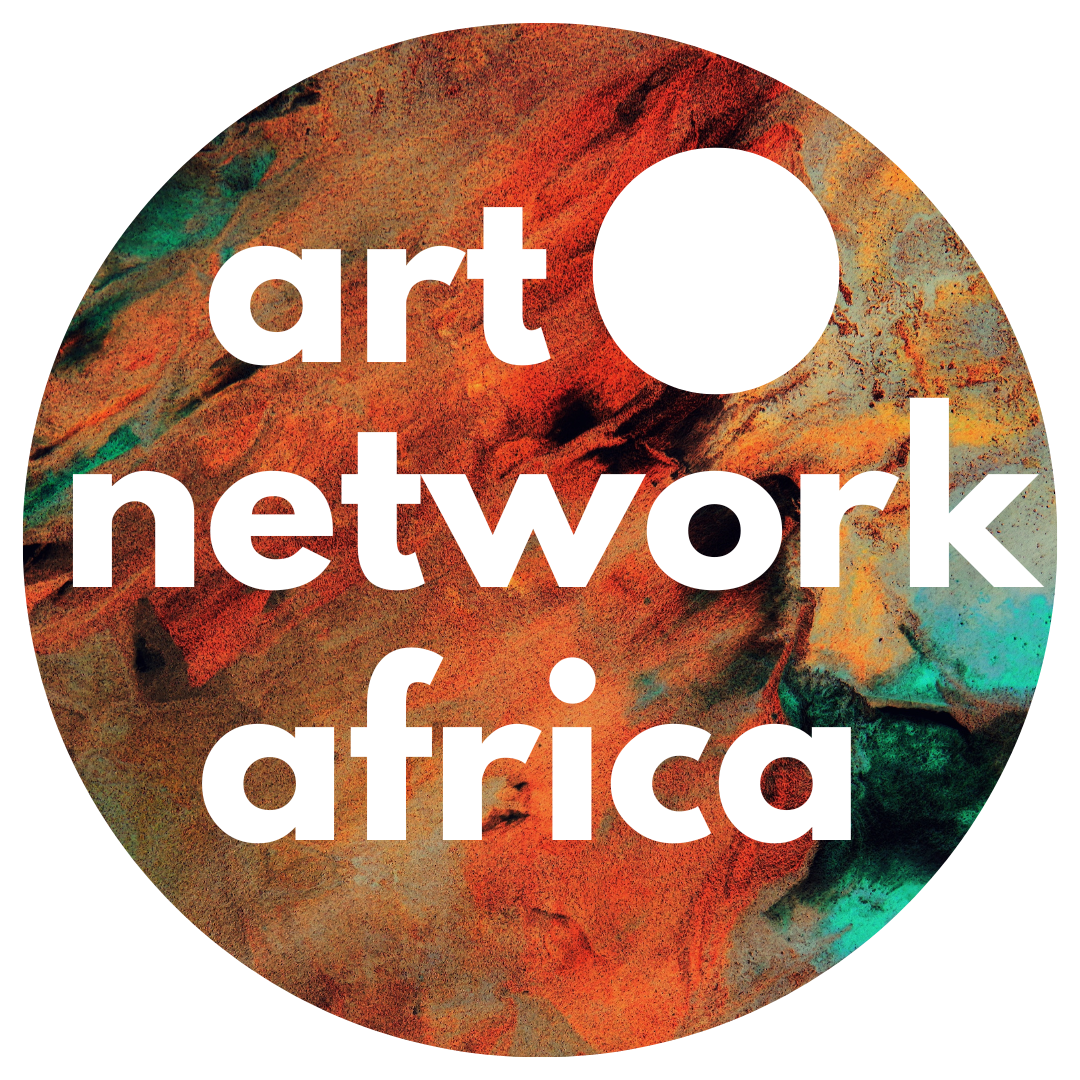Contemporary African art has a unique way of nurturing well-being, fostering peace, and strengthening connections to shared heritage—all while sparking joy. It bridges personal and collective experiences, creating spaces where stories, emotions, and identities intertwine. In this article, we’ll explore how this unfolds through notable creative expressions and spaces.
Contemporary African art nurtures well-being and joy by offering spaces for reflection, healing, and connection. This can be seen in Marcellina Akpojotor’s Joy of More Worlds exhibited at Rele Gallery. This exhibition connected to joy by celebrating the beauty found in everyday family moments, from playful exchanges to tender intimacies, reflecting the uplifting power of these experiences. Through her use of Ankara fabric, a cultural symbol, and her unique collage technique, she transformed personal memories into a vibrant visual narrative that invited viewers to experience joy through the shared legacy of family, female empowerment, and motherhood. The work emphasized the happiness found in life’s simplest moments and highlighted the emotional depth embedded in personal histories.
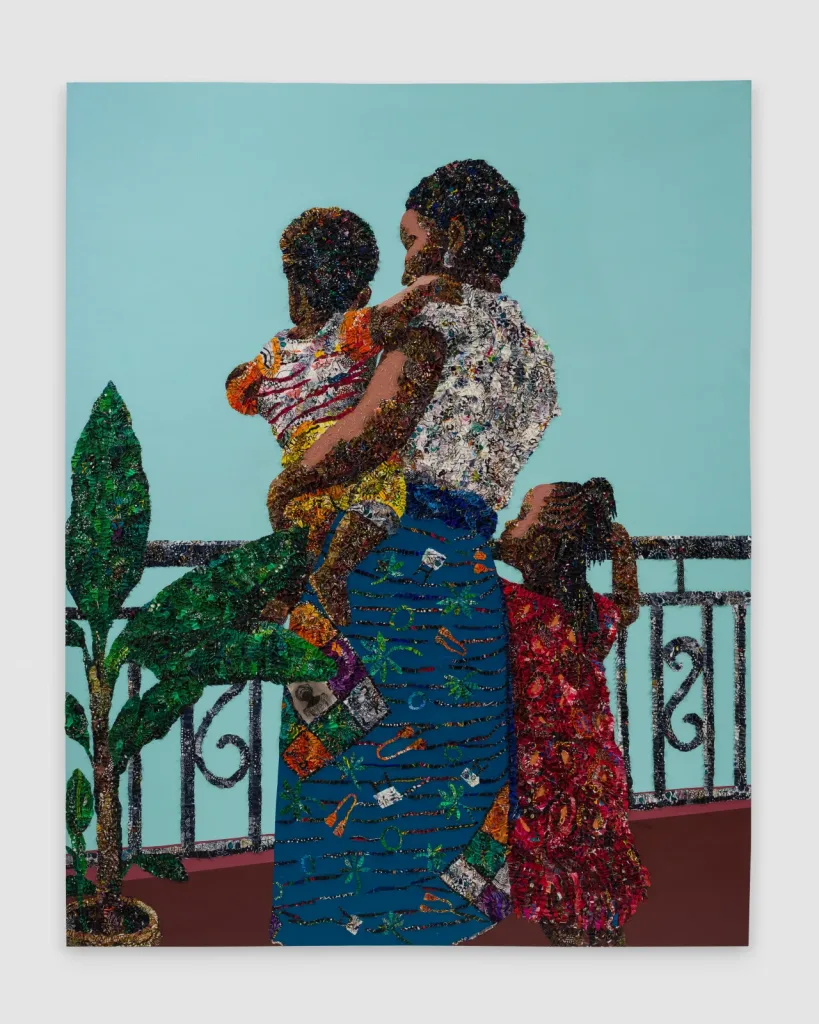
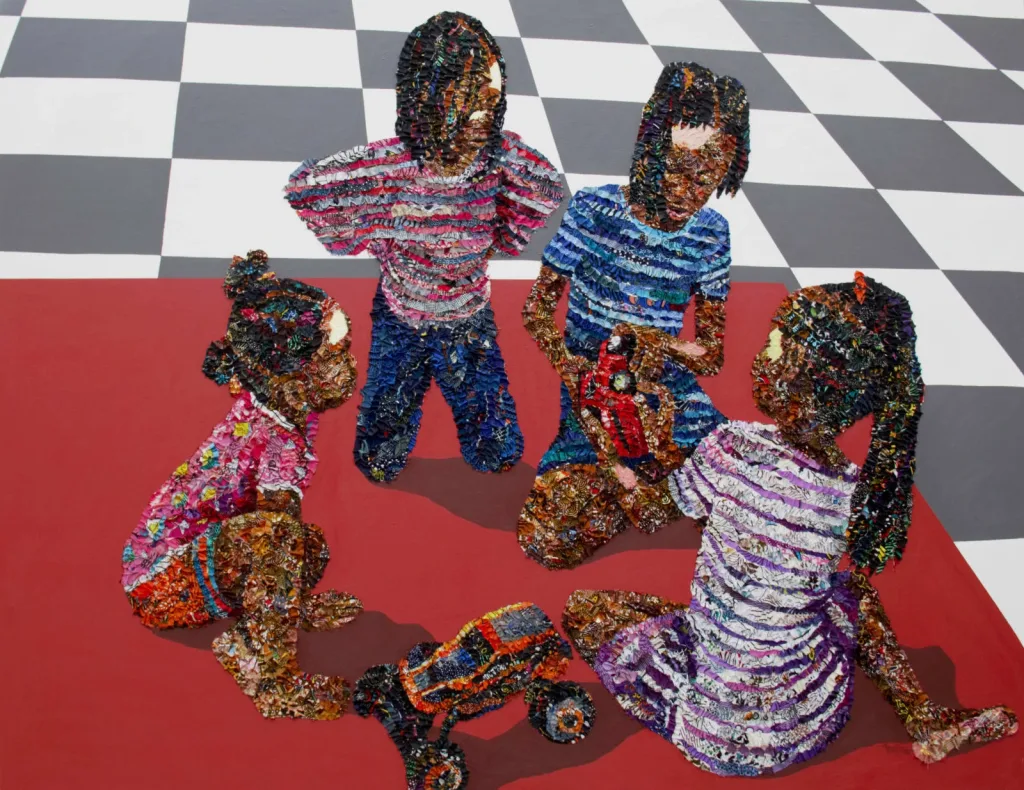
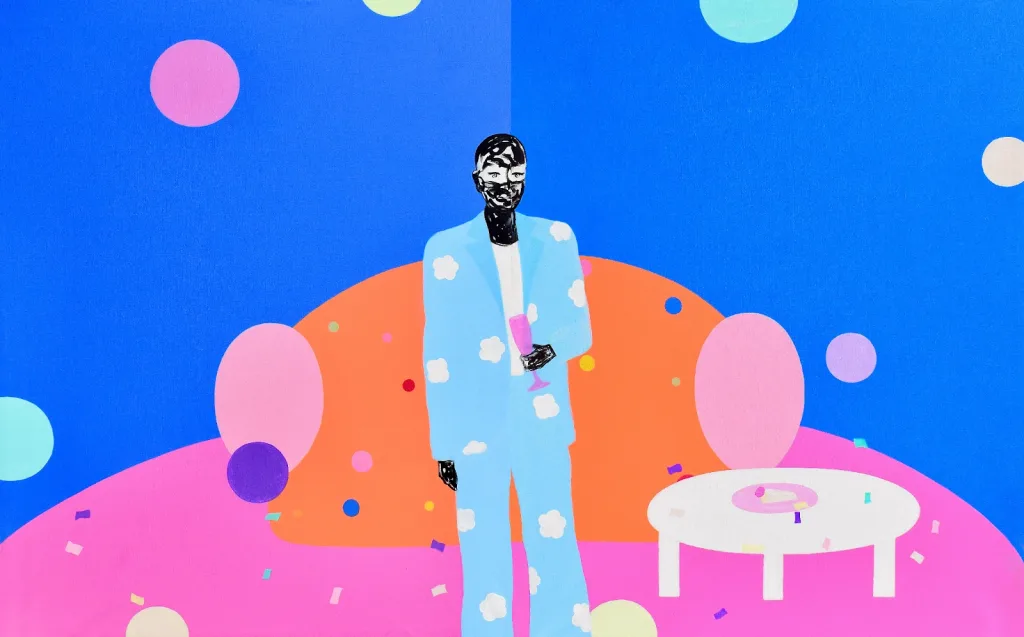
In a similar manner, Abe Ogunlende’s art—defined by minimalist compositions and vibrant pastel tones, which he believes promote well-being—seeks to offer fresh perspectives on African life, delving into its complexities through simplicity. In his work, Early to the Party, Ogunlende explores themes of joy and resilience, using his distinctive style to evoke feelings of happiness while encouraging viewers to reflect on their personal and unique journeys.
Contemporary African art also serves as a call for, and bridge to, peace and sustainability, addressing themes of harmony, environmental consciousness, and collective responsibility. It provides a platform for dialogue, urging audiences to reflect on social and ecological challenges while envisioning a more harmonious future. Consider PANGEA (16th of January to 15th of February, 2025), an exhibition co-presented by KATES-FERRI PROJECTS (KFP) and O’DA Art, uniting six artists—Soji Adesina, Guillermo Garcia Cruz, Turiya Magadlela, Paul Majek, Anthony Nsofor, and Martin Pelenur—from four continents. Through a dynamic blend of geometric abstraction and figurative painting, the exhibition explores themes of identity, power, and collective humanity. By pairing these contrasting styles, PANGEA fosters cross-cultural dialogue, offering a platform for collaboration that calls for peace, sustainability, and a more interconnected world. This exhibition challenges viewers to rethink boundaries—whether artistic, cultural, or ideological—and embrace new perspectives that transcend divisions.


Deepening connections to shared heritage, Contemporary African art celebrates cultural identity and collective memory. An instance of this is A Conscious Relation: Body/Mind/Movement, on view at Tiwani Contemporary from the 6th of February to the 22nd of March, 2025, which explores sovereignty as both a political and embodied experience. Featuring works by Virginia Chihota, Alicia Henry, Joy Labinjo, Wura-Natasha Ogunji, Dawit L. Petros, Umar Rashid, and Leo Robinson, the exhibition examines identity, history, and resistance through movement, action, and materiality.
From Alicia Henry’s fabric-based sculptures on kinship, to Joy Labinjo’s self-portraits reclaiming the Black female nude, each work engages with autonomy and belonging. Virginia Chihota and Wura-Natasha Ogunji reflect on resilience and mobility, while Leo Robinson and Umar Rashid weave myth and futurism into narratives of selfhood. Dawit L. Petros interrogates colonial legacies through cartography and photography. By weaving together themes of displacement, reclamation, and resistance, this exhibition highlights the ways contemporary African artists assert agency and deepen connections to shared heritage.
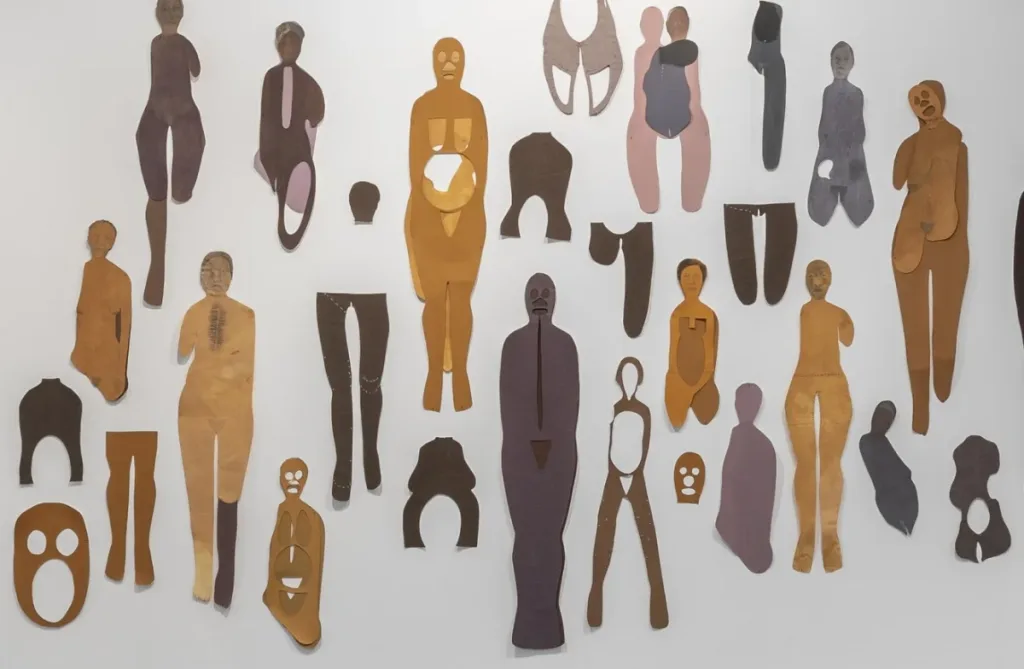
Another example is Mostafa Rahma’s Mythology, on view at the Picasso Art Gallery from the 2nd of February to the 28th of February, 2025, which reimagines Egyptian myths and folk tales through a contemporary lens. Blending historical symbols with his own vivid characters, Rahma’s over 20 works bridge past and present, offering a dynamic exploration of cultural identity, collective memory, and ancestral narratives.

This is also demonstrated by Nature Morte, on view at October Gallery, where Eddy Kamuanga Ilunga’s striking paintings confront the devastating impact of industrial mining on Congolese communities and their ancestral lands. In his fourth solo exhibition at the gallery, Kamuanga weaves together history, symbolism, and contemporary realities, depicting figures adorned with intricate digital circuitry as they navigate a world shaped by toxic waste, environmental destruction, and the relentless extraction of the DRC’s rich mineral resources. Through haunting mises-en-scène, Nature Morte exposes the collision between heritage and modernity, illustrating how neocolonial exploitation continues to erode cultural identity.
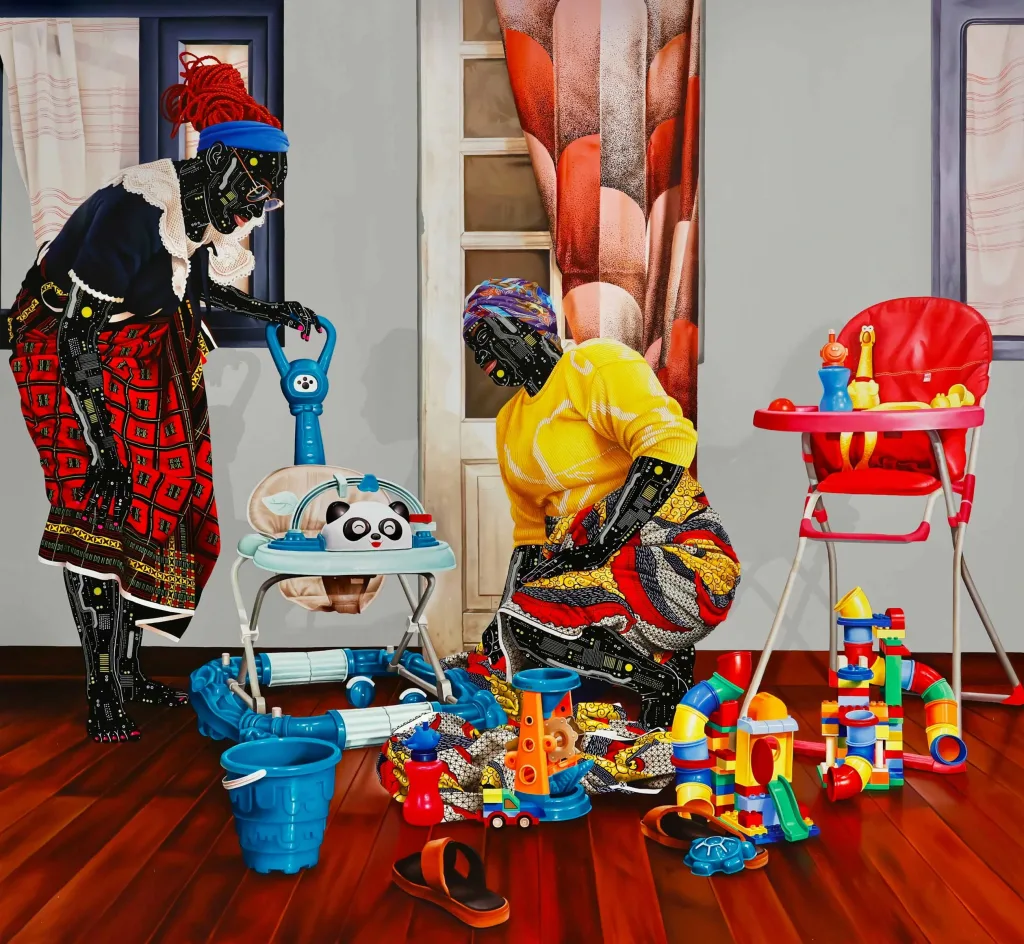
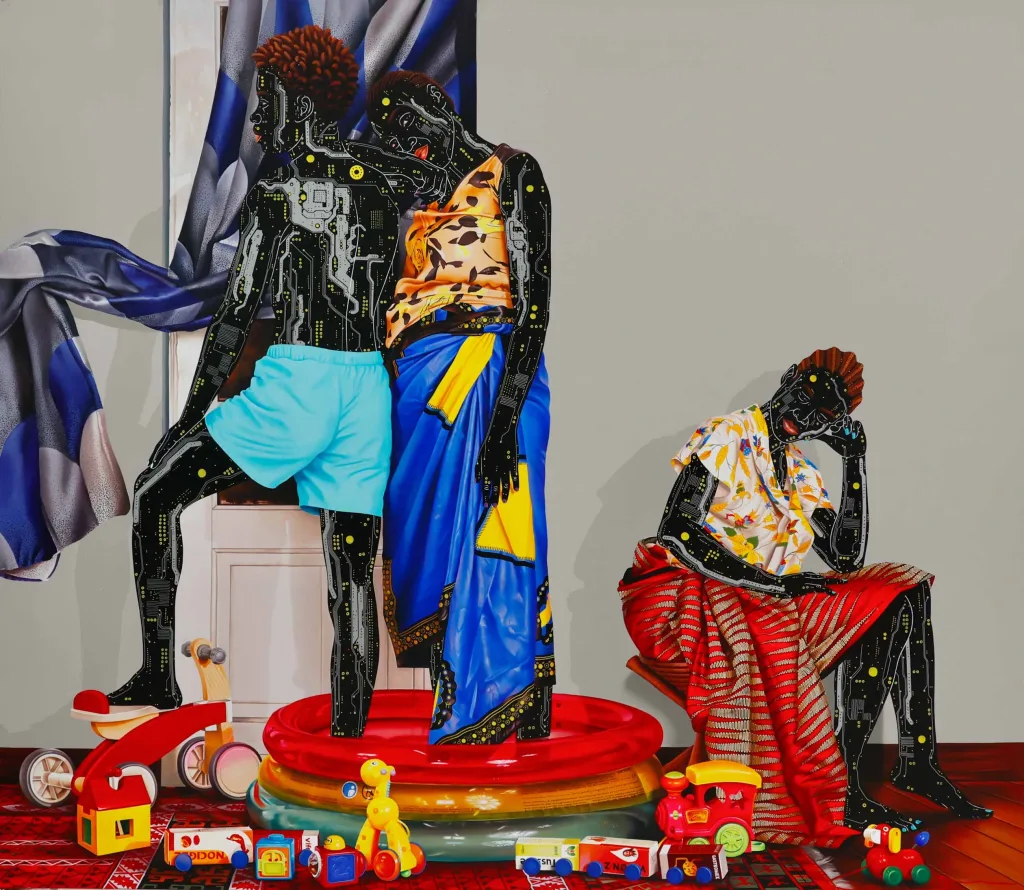
Another illustration of this is Reflections of Identity: Voices in African Portraiture, a group exhibition showcased at the Christopher Moller Gallery. This exhibition celebrated the rise of African portraiture over the past decade, featuring artists such as Chiderah Bosah, Barry Yusufu, Jean Baptiste Djéka, and Tosin Kalejaye, whose works offer nuanced explorations of identity, history, and cultural memory. Through a diverse range of mediums and techniques, the exhibition highlighted how portraiture serves as both a personal and collective archive, capturing the complexities of African experiences while fostering a sense of community. By reclaiming representation and pushing beyond stereotypes, these artists bridged past and present, urging a more inclusive global art narrative. In doing so, Reflections of Identity not only amplifies these voices but also affirms the significance of portraiture in fostering deeper connections to heritage, selfhood, and community.





A premier auction house dedicated to South African and African art, design, and wine, Strauss & Co, through its sales in Cape Town, Johannesburg, and online, plays a pivotal role in preserving and celebrating Africa’s artistic heritage. By handling works from artists such as Irma Stern, William Kentridge, Gerard Sekoto, Dylan Lewis and J.H. Pierneef, the house fosters a deeper connection to the continent’s rich artistic traditions.


As Africa’s leading auction house dedicated to African art, Strauss & Co’s auctions not only showcase the evolution of the continent’s artistic landscape but also preserve collective memory by spotlighting both historical and contemporary narratives. By championing African artists across generations, Strauss & Co ensures that cultural identity remains at the forefront of the global art market, reinforcing the continent’s legacy and influence. Currently, they have an online auction for Kalahari Studio ending on the 10th of February, 2025.
The unifying and wholesome effect of contemporary African art lies in its ability to cultivate hope, and a deep connection to shared heritage, fostering a sense of belonging and cultural continuity.
